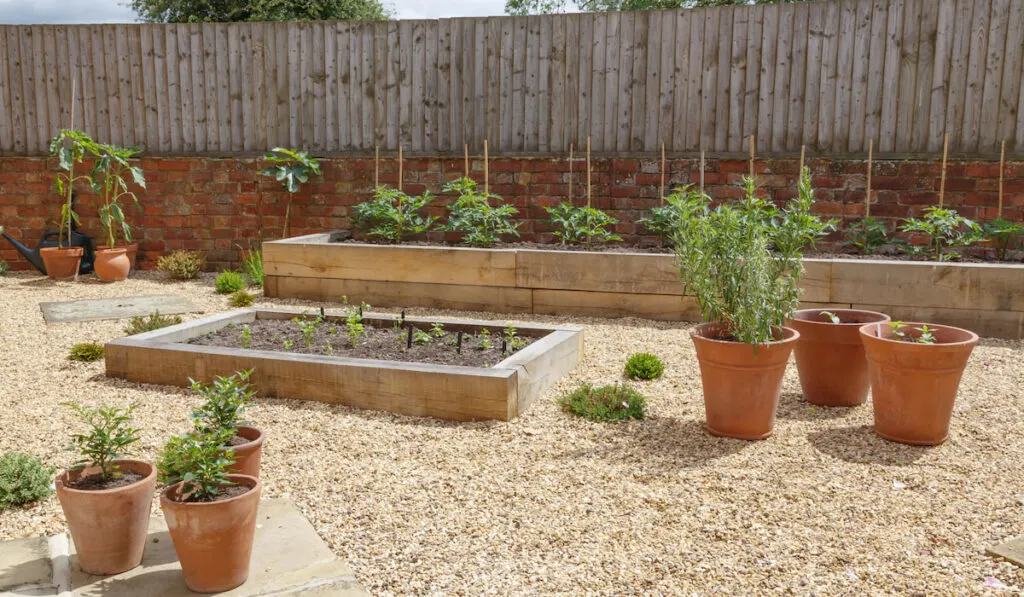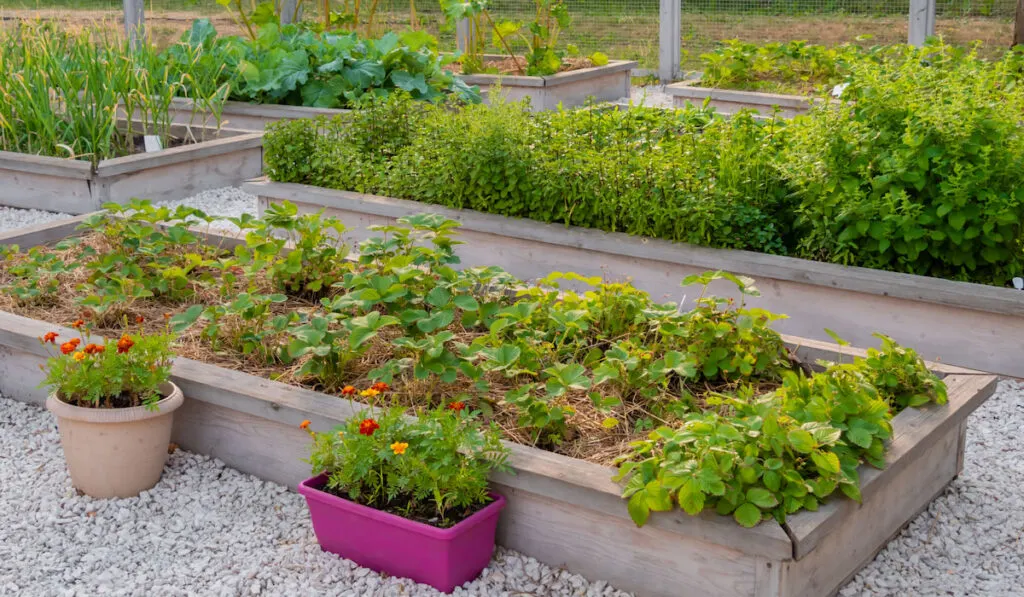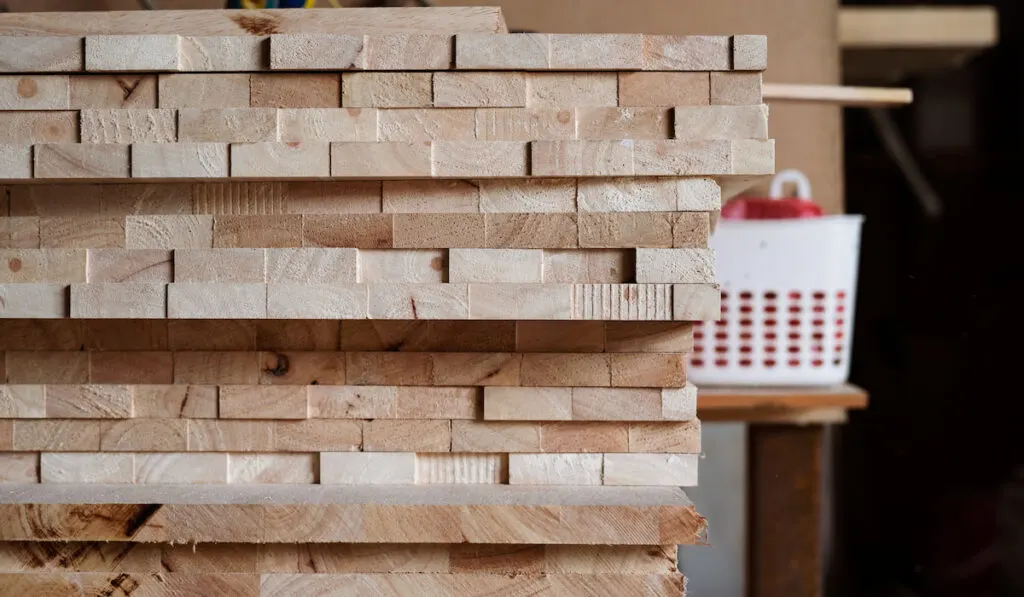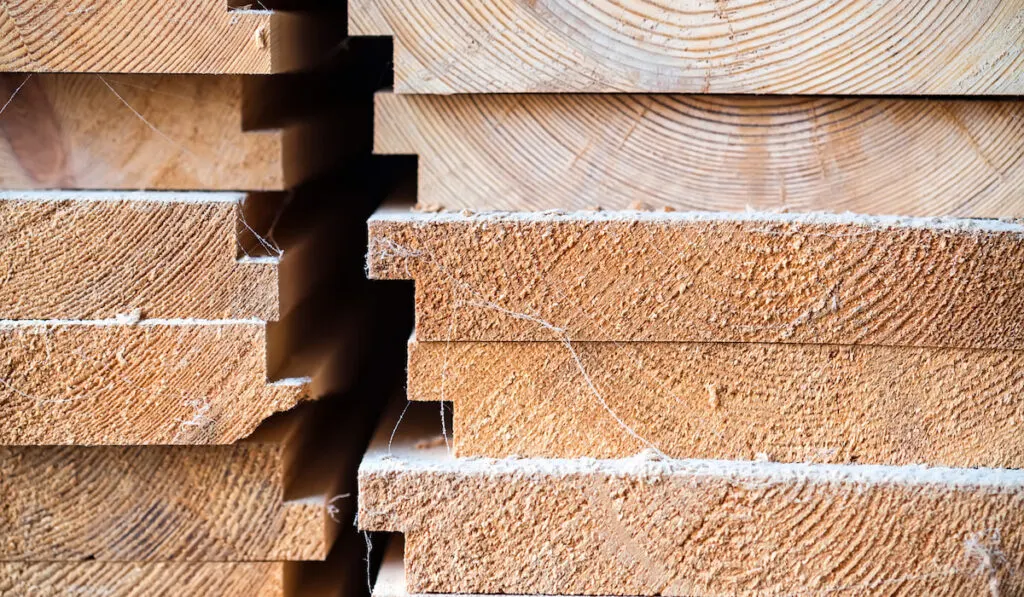*This post may have affiliate links, which means I may receive commissions if you choose to purchase through links I provide (at no extra cost to you). As an Amazon Associate, I earn from qualifying purchases. Please read my disclaimer for additional details.
Landscape timbers allow homeowners to transform their unattractive exterior into an outstanding landscaping achievement. But even with their potential visual appeal, durability may sometimes be an issue.
How long will landscape timbers last? The length of time landscape timbers last depends on whether they are treated or not. Untreated timbers may last for about 3 to 5 years.
But treated timbers may last for 7 years or more. Then there are synthetic timbers (composite decking), which can last as long as 25 years.
In the rest of this article, we explore the intricacies of the lifespan of landscape timbers. We also discuss ways to keep landscape timbers from rotting.
Table of Contents
How Long Will Landscape Timbers Last?

The durability of landscape timbers depends on whether or not they are treated.
When Treated
When treated, landscape timbers will last over 7 years before you will need to replace them. Some may even last as long as 20-40 years.
The wood used for treated landscape timbers is pressure-treated with an oil-based preservative. The preservative starves off fungi, mold, and any damage resulting from exposure to air, moisture, and sun.
When Untreated
When untreated, the durability of landscape timbers is indeterminate due to several variables. Some people say untreated variants will last for two years before you notice any sign of rot, while others say it lasts longer.
If you intend to use an untreated 2 x 4, how you will apply it matters a lot. You have to consider other factors like how much sun and moisture it is exposed to and if it will touch the ground directly.
Are All Landscape Timbers Treated?
No, not all landscape timbers are treated. As we already mentioned, natural landscape timbers can be either treated or untreated.
Untreated timbers are naturally resistant to extreme temperatures, fungal growth, and moisture. The color of these types of wood is pleasing, and you can even paint them to match your other landscape features.
Recycled plastic timbers are also an example of landscaping timbers that are not treated.
These pieces are easy to lift and install if you intend to complete your landscaping project yourself. Synthetic timbers do not contain any chemicals, making them safe for your family, plants, and environments.

Are Treated Landscaping Timbers Safe for Garden Use?
No, treated landscape timbers are not safe for garden use. When you use landscape timbers for raised beds or garden edges, remember they are in constant contact with the soil.
When landscape timbers are treated with pentachlorophenol or creosote, various plant parts can come into contact with the substances. This causes the blockage of their stomata, leading to impaired gas exchange and photosynthesis.
Consequently, the plant will die. Apart from that, pentachlorophenol and creosote emit an offensive odor.
Before 2004, chromate copper arsenate (CCA) was used to treat landscape timbers to increase their life span. But arsenic, one of the chemicals used for making the preservative, is highly toxic to plants and humans.
Landscaping timbers treated with CCA mixtures should not be used near plants for human consumption. Since some of the chemicals can leach into the soil, they may be absorbed into the plants.
The amount of chemicals that leach into the soil depends on a variety of factors. Long-term exposure to these toxic chemicals via edible plants can pose serious health risks.
According to the Environmental Protection Agency (EPA), manufacturers stopped using CCA for products used in residences in January 2004.
However, you can still use CCA-treated timbers for any outdoor structure like gazebos, decks, and fences. But you should not use it in a vegetable garden.
The EPA also advises against the use of CCA-treated timber for compost or mulch material. It is best to avoid using treated landscape timber in your garden completely.

Nonetheless, if you intend to use timber treated with CCA close to a vegetable garden, ensure you line the soil with a waterproof material before you install it.
This will prevent the wood from directly touching the soil and keep the chemicals from leaching in.
There are other landscaping timbers you can use safely in your garden. They include untreated wood like redwood, cedar, and juniper. These alternatives are better for your garden since they are naturally resistant to weather and pests.
You can also try non-wood landscaping timbers. These are made from metals, plastic, and wood composites containing recycled wood fibers.
What Type of Wood Is Used for Landscaping?
Cedar, redwood, and cypress are ideal choices for landscaping. But the most rot-resistant and most durable woods are those that are pressure-treated and eco-friendly. Besides these, you can also use the conventional 2″ x 4″ for borders.
Railroad ties are cheap, durable, and make a bold statement. However, they are heavy and tricky to handle. Old railroad ties are ideal because they are cheap and look nice.
On the other hand, new ties are potentially toxic. They contain creosote, which may leach out, contaminating the soil and plants.
Bender board is another wood used for landscaping, but it can be hard to find. Bender boards are available in long rolls, and they adapt to the tightest turns and curves.
How Do You Keep Landscape Timbers From Rotting?
Here are some tips to help keep your landscape timbers from rotting:

Treat the Wood for Fungal Growth
Landscape timbers are susceptible to fungal growth, and fungal growth causes rotting. Sometimes, even when infected, the fungal growth might be unnoticeable.
So from time to time, examine the wood for fungal growth and treat it accordingly.
Treat the Wood for Exposure to Moisture
The point of using landscape timber is that it stays outside. But when outdoors, the wood is exposed to the elements, including moisture.
Timber retains a lot of moisture, and once it gets wet, it becomes difficult to dry out. In the end, this will cause rotting. But if you treat the wood to prevent the absorption of water, you can avoid this.
Paint the Wood
Having bare wood in your garden often looks nice. When you create raised flower beds or build a structure, your first thought might be to keep the timber as natural as possible.
But despite how lovely it might look, natural wood is susceptible to rot, especially when it gets wet. Besides, several organisms and burrowing insects will make this rotten wood their home.
The good news is, you can prevent this by painting the wood.
Apply Alkaline Copper Quat or Copper Azole
Another way to prevent the timber from rotting is to apply copper azole or alkaline copper quat to the wood surface when the stain or paint is dry. Both chemicals help to preserve pressure-treated landscape timbers.
Conclusion
The durability of timbers is one thing to consider before you begin any landscaping project. Many landscapers opt for treated timbers over untreated ones because of their durability.
But certain environmental factors do not favor the use of the treated ones. All in all, the decision is up to you, and it depends on the factors that apply to you.
Resources
- https://www.diynetwork.com/how-to/outdoors/landscaping/tips-on-garden-border-materials
- https://homeguides.sfgate.com/landscaping-timbers-safe-garden-use-51920.html
- https://www.improvenet.com/a/landscape-timbers-what-you-need-to-know
- https://www.gizmoplans.com/can-untreated-wood-be-used-outdoors/
- https://findanyanswer.com/how-do-you-preserve-landscape-timbers
- https://www.radarlandscapes.com.au/rotting-landscape-timbers/
- https://www.quora.com/How-long-will-untreated-wood-last-outside
- https://ultradecking.co.uk/untreated-composite-deck-duration/
- https://www.homeownershub.com/maintenance/landscaping-timbers-life-expectancy-318796-.htm
- https://www.clp-inc.com/how-long-does-pressure-treated-wood-last/
